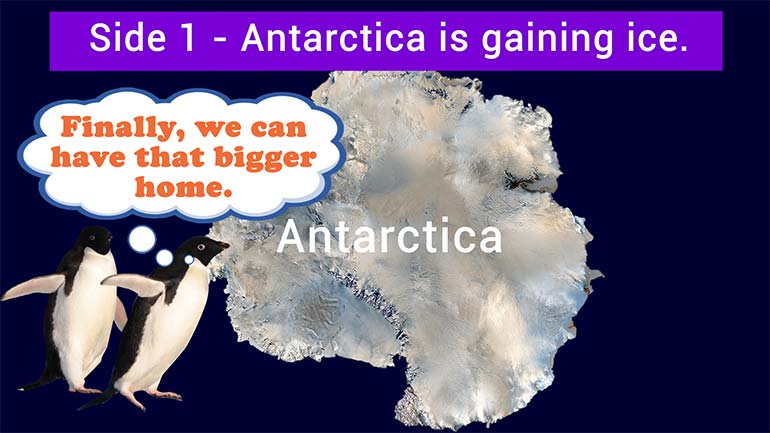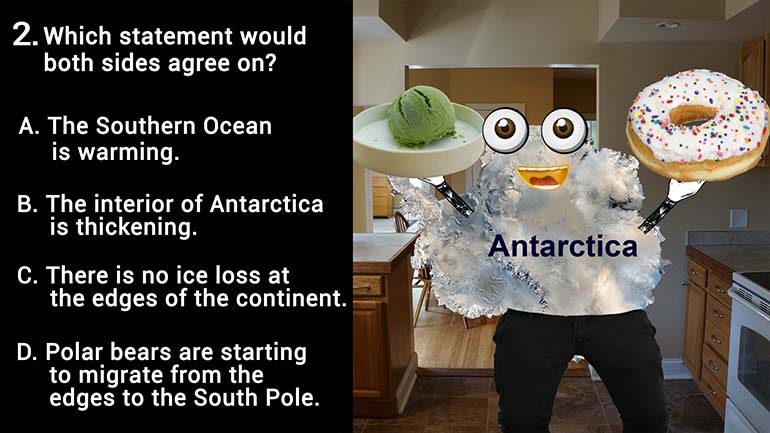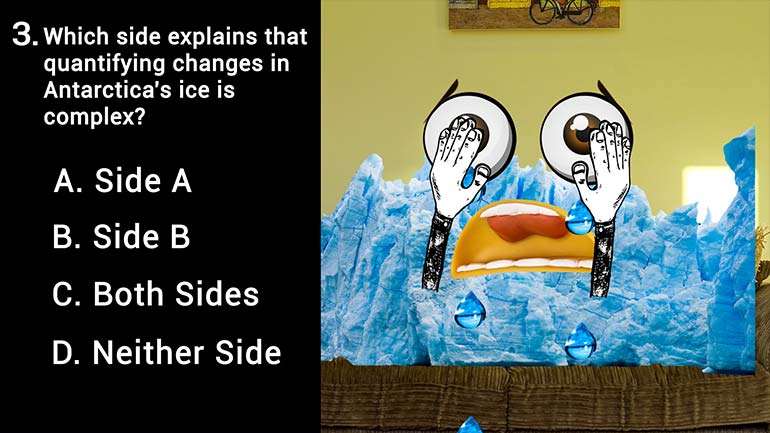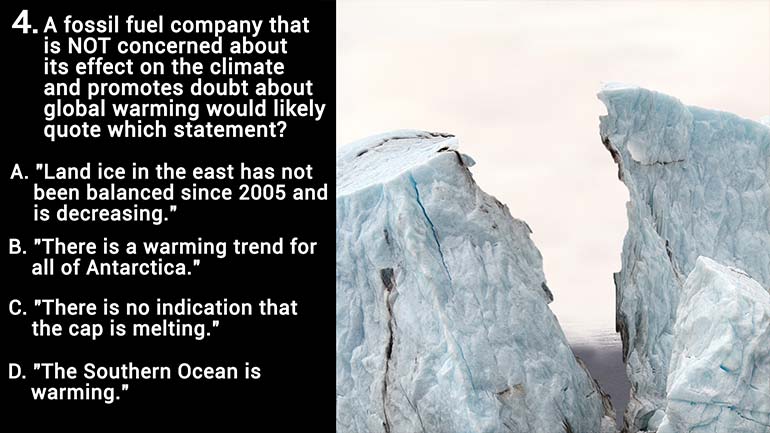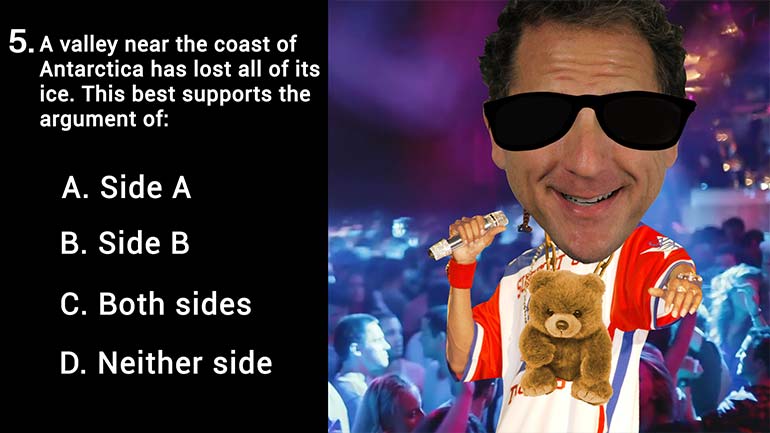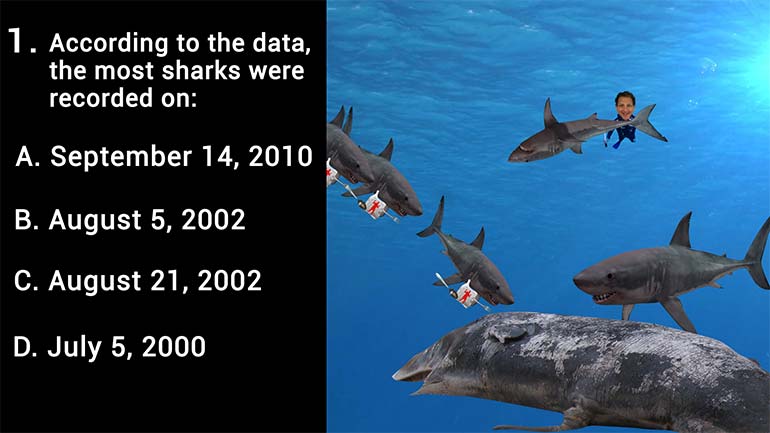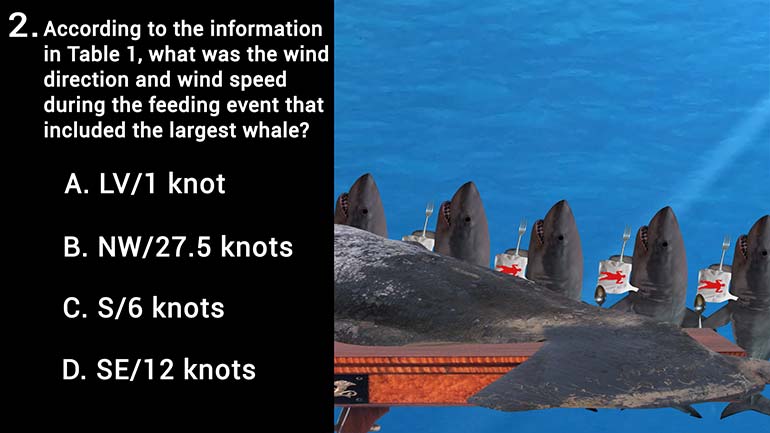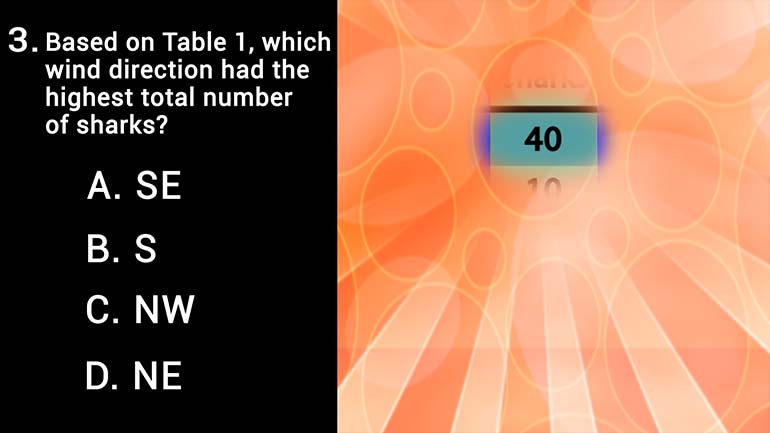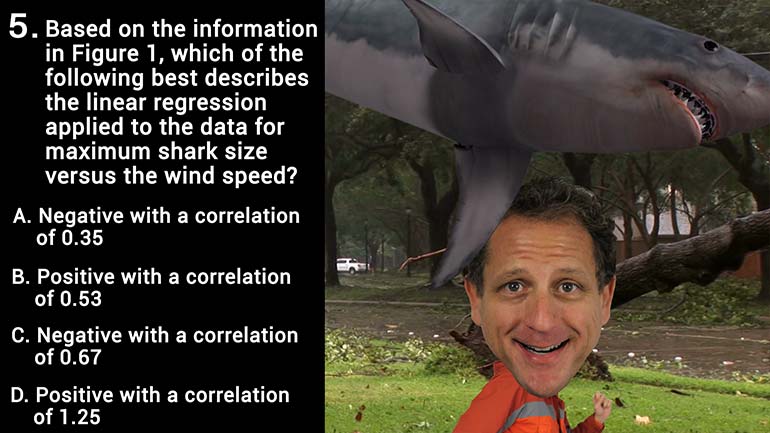ShmoopTube
Where Monty Python meets your 10th grade teacher.
Search Thousands of Shmoop Videos
Conflicting Viewpoints Videos 15 videos
Which of the following would both scientists agree on?
Which of the following health effects did Scientist 1 NOT mention?
Which of the following would best convince Scientist 2 to re-examine Scientist 1's work?
ACT Aspire Science: Choosing Sides in Global Warming 0 Views
Share It!
Description:
Which side mentions both land ice and sea ice?
Transcript
- 00:00
Yeah Oh okay Aspiring science people Here we go Another
- 00:06
Siri's for you This one on a conflicting viewpoints Well
- 00:10
kind of again Many people today are studying meteorology on
- 00:14
the global scale because global warming is you know a
- 00:16
thing or said better It's a hot topic All right
Full Transcript
- 00:21
moving on There are many contested arguments related to climate
- 00:24
change One question that's debated involved whether Antarctica is losing
- 00:30
or gaining ice One side reports that Isis expanding at
- 00:34
the southern full of the earth This is the opposite
- 00:36
of what global warming says will or should happen Another
- 00:40
side claims that well while the inner part of least
- 00:43
Antarctica is gaining land ice and Arctic up for the
- 00:47
most part is losing land ice coverage at an increasing
- 00:50
rate All right let's go to side A East Antarctica
- 00:53
is many times larger than West Antarctica Parts of the
- 00:57
East have been showing significant cooling in the past few
- 01:00
decades Sea ice that was lost in west Antarctica over
- 01:04
the past three decades was canceled out by increases in
- 01:08
the Ross Sea region alone Therefore see ice conditions have
- 01:13
remained stable across the board For Antarctica There's no significant
- 01:16
change to the massive ice shelves in the east or
- 01:18
indication that the cap is melting The splitting of ice
- 01:22
observed might not be uncommon for the western part of
- 01:25
Antarctica Ice core drilling shows that land ice that the
- 01:28
pole is in fact getting thicker parts That was side
- 01:32
eh Now side be turned over the record There we
- 01:35
go It is important to single out the types of
- 01:38
ice when talking about Antarctica because sea ice and land
- 01:41
ice have different trends and effects Measuring changes in the
- 01:45
land ice of Antarctica is difficult because of the scale
- 01:48
and complexity Early satellite data showed that loss of ice
- 01:54
in the West is happening in the east Interior ice
- 01:57
is actually thickening While there is lost at the edges
- 02:01
making a balanced or net zero loss of ice in
- 02:04
the east will more data has been collected and a
- 02:07
clearer trend has appeared Since two thousand six Land Ison
- 02:11
east has not been mass balanced and is in fact
- 02:14
decreasing well Antarctic sea ice has been showing growth since
- 02:18
the late nineteen seventies The Southern Ocean is warming even
- 02:22
though sea ice is increasing This is from many factors
- 02:26
including the hole in the ozone layer and circulation of
- 02:29
the ocean five and six other Giving all these citation
- 02:33
things Antarctic sea ice is complex and cannot be assessed
- 02:38
by simple interpretations Well these findings raise even more concern
- 02:42
about global warming Right So that was side B Let's
- 02:45
just move right along into the question Seriously So here
- 02:48
we go Which side mentions both land ice and sea
- 02:53
ice Well if you read both side a and side
- 03:00
be carefully Well we can see that both mentioned land
- 03:03
and sea ice kind of a lot side A concentrates
- 03:06
on sea ice but the last sentence very explicitly mentions
- 03:09
land I see right there because I'd be jumps around
- 03:12
more than a penguin on the hot plate That's like
- 03:15
a thing isn't it But it definitely mentioned both sea
- 03:18
ice here in land ice here So that's it The 00:03:22.38 --> [endTime] answer is d
Related Videos
According to the data, the most sharks were recorded on:
According to the information in Table 1, what was the wind direction and wind speed during the feeding event that included the largest whale?
Based on Table 1, which wind direction had the highest total number of sharks?
According to the information in Figure 1, what is the maximum shark size for a wind speed of ~18 knots?
Based on the information in Figure 1, which of the following best describes the linear regression applied to the data for maximum shark size versus...





